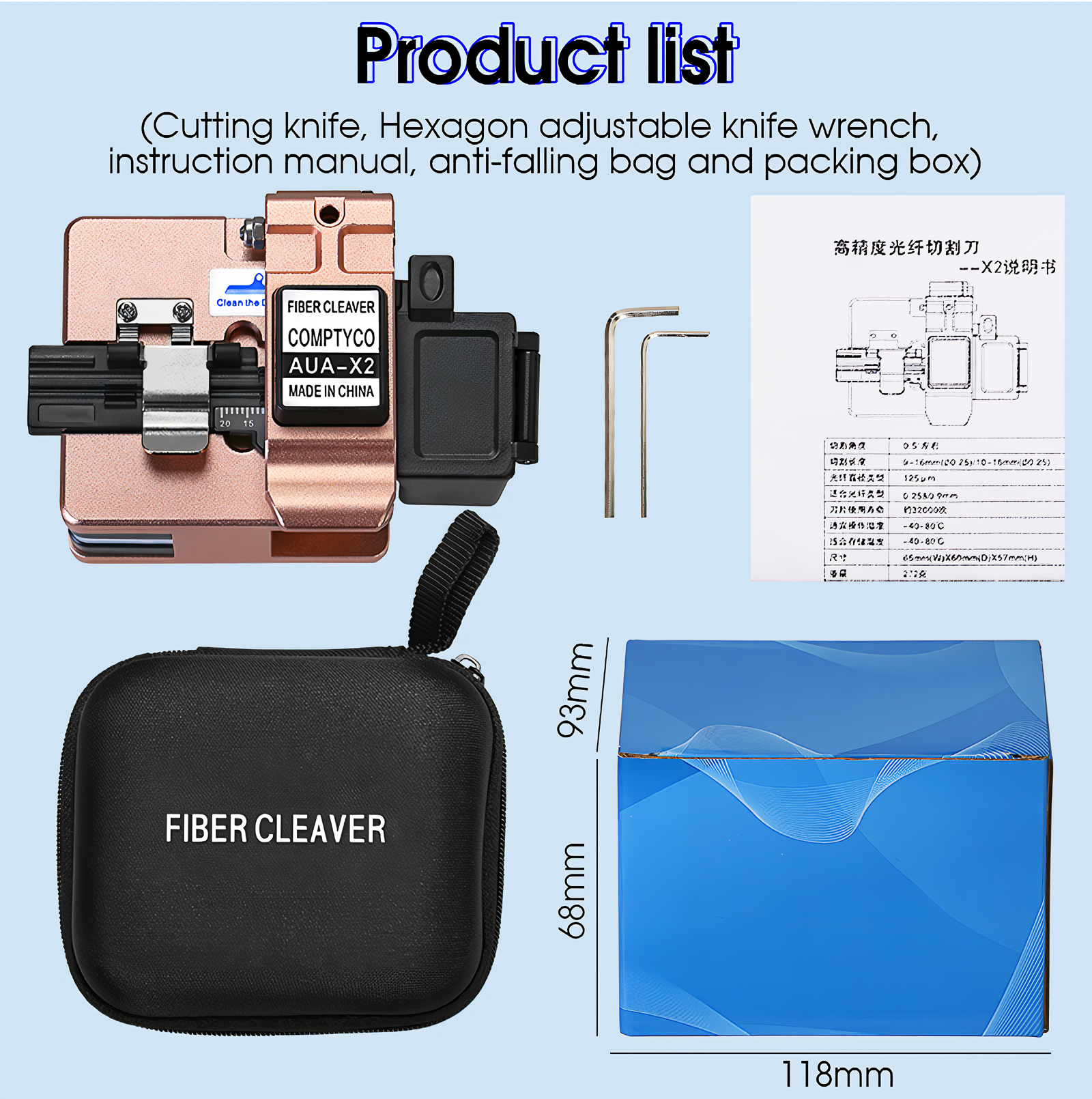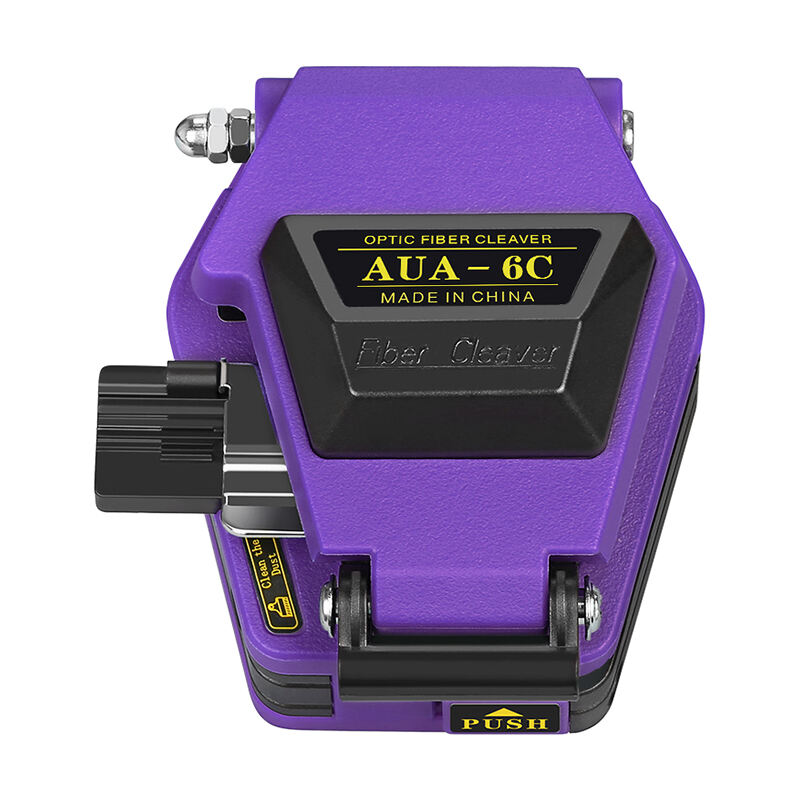Mastering the Art of Optical Fiber Tool Care
In the world of fiber optic networks, the precision and reliability of your equipment make all the difference between success and failure. At the heart of this precision lies the fiber cleaver, an indispensable tool that demands meticulous care and attention. Professional technicians understand that proper maintenance of a fiber cleaver not only extends its lifespan but also ensures consistently clean, precise cuts essential for optimal network performance.
Whether you're a seasoned fiber optic specialist or new to the field, maintaining your fiber cleaver should be at the top of your priority list. The quality of fiber optic splices and connections directly depends on how well you maintain this crucial piece of equipment. Let's explore the essential practices that will keep your fiber cleaver performing at its peak.
Understanding Your Fiber Cleaver Components
Critical Parts and Their Functions
The fiber cleaver consists of several vital components that work together to achieve perfect cleaves. The blade assembly, typically made of diamond or ceramic material, is the heart of the tool. This precision-engineered component requires special attention as it directly impacts the quality of your cleaves. The fiber holder and clamps ensure proper positioning and tension during the cleaving process, while the base plate provides stability and support.
Another crucial element is the scoring mechanism, which creates the initial stress point in the fiber. Understanding how these components interact helps technicians appreciate the importance of maintaining each part properly. The alignment guides and measurement markers also play essential roles in achieving consistent, high-quality cleaves.
Common Wear Points and Vulnerabilities
Every fiber cleaver has specific areas that experience more wear and tear than others. The blade edge naturally degrades over time with use, affecting the cleave quality. The fiber holder and clamps can accumulate debris and dust, potentially compromising their grip strength. The sliding mechanisms may become less smooth due to dirt accumulation or lack of proper lubrication.
Identifying these vulnerable points early allows for preventive maintenance, helping avoid costly repairs or replacements. Regular inspection of these areas should become part of your maintenance routine, ensuring potential issues are caught and addressed before they affect your work quality.


Daily Maintenance Procedures
Cleaning and Inspection Routines
Daily cleaning of your fiber cleaver is fundamental to maintaining its performance. Start each workday by gently removing any fiber debris from the blade area using approved cleaning solutions and lint-free wipes. Inspect the blade edge for any signs of damage or wear. Clean the fiber holders and clamps thoroughly, ensuring no residue remains that could affect fiber positioning.
Pay special attention to the cleaving area and measurement guides, as even small amounts of dust can impact precision. Use compressed air carefully to remove loose particles, but avoid directing high-pressure air directly at sensitive components. Document any unusual findings during your inspection to track potential developing issues.
Proper Storage Practices
When not in use, store your fiber cleaver in its designated case, protected from dust and environmental contaminants. Ensure the storage area maintains a consistent temperature and humidity level, as extreme conditions can affect the tool's precision components. Always replace protective covers and caps before storage.
Create a dedicated clean workspace for your fiber cleaver operations and storage. This helps prevent accidental damage and contamination while making it easier to maintain consistent cleaning routines. Consider using desiccant packets in the storage case to control moisture levels, particularly in humid environments.
Advanced Maintenance Techniques
Blade Position Optimization
The blade position significantly influences cleave quality. Regularly check and adjust the blade height and angle according to manufacturer specifications. Most modern fiber cleavers allow for multiple blade positions, extending the useful life of the cutting edge. Learn to recognize when blade rotation or advancement is necessary by monitoring cleave quality and end-face results.
Keep detailed records of blade position changes and corresponding cleave results. This documentation helps identify patterns and optimize maintenance intervals. When adjusting blade positions, always use the manufacturer's recommended tools and procedures to avoid damage to the precision mechanisms.
Calibration and Alignment Checks
Regular calibration ensures your fiber cleaver maintains its precision. Schedule monthly alignment checks using calibration fibers or tools provided by the manufacturer. Verify that all measurement markers and guides align properly and that the cleaving angle remains within specifications.
Professional calibration services may be necessary annually or when performance issues arise. Document all calibration activities and results, creating a maintenance history that helps predict when future adjustments or services might be needed. This proactive approach helps maintain consistent performance and extends the tool's operational life.
Preventive Maintenance Schedule
Weekly Maintenance Tasks
Establish a weekly maintenance schedule that includes thorough cleaning of all components and detailed inspection of wear points. Check all moving parts for smooth operation and proper alignment. Lubricate mechanical components as recommended by the manufacturer, using only approved lubricants.
Review your cleaving results from the past week to identify any trends that might indicate developing issues. Clean and inspect the base plate thoroughly, ensuring no fiber fragments or debris have accumulated in hard-to-reach areas. Test the clamping mechanism's operation and adjust if necessary.
Monthly and Quarterly Procedures
Monthly maintenance should include more comprehensive inspections and performance testing. Verify the accuracy of measurement guides and markers, and check for any signs of wear on the blade edge. Clean and inspect the entire unit thoroughly, including rarely accessed areas.
Quarterly maintenance might involve blade rotation or advancement, depending on usage patterns and manufacturer recommendations. This is also an excellent time to review maintenance records and plan for any necessary professional servicing or parts replacement. Consider having backup components ready for critical parts that may need replacement.
Frequently Asked Questions
How often should I clean my fiber cleaver?
Daily cleaning is essential for optimal performance. At minimum, clean the blade area and fiber holders after each use or work session. A more thorough cleaning should be performed weekly, with comprehensive maintenance monthly.
When should I rotate or replace the cleaver blade?
Blade rotation or replacement timing depends on usage frequency and cleave quality results. Generally, consider rotating the blade position when you notice degradation in cleave quality or after approximately 1,000 to 1,500 cleaves. Replace the blade when all positions have been used or if damage is detected.
What cleaning solutions are safe to use on my fiber cleaver?
Only use manufacturer-approved cleaning solutions and isopropyl alcohol (99% pure). Avoid harsh chemicals or abrasive materials that could damage sensitive components. Always use lint-free wipes and follow the manufacturer's cleaning guidelines carefully.
How can I tell if my fiber cleaver needs professional servicing?
Consider professional servicing if you notice inconsistent cleave quality, unusual mechanical resistance, or if regular maintenance procedures don't resolve performance issues. Annual professional maintenance is recommended for heavily used equipment, regardless of apparent problems.







